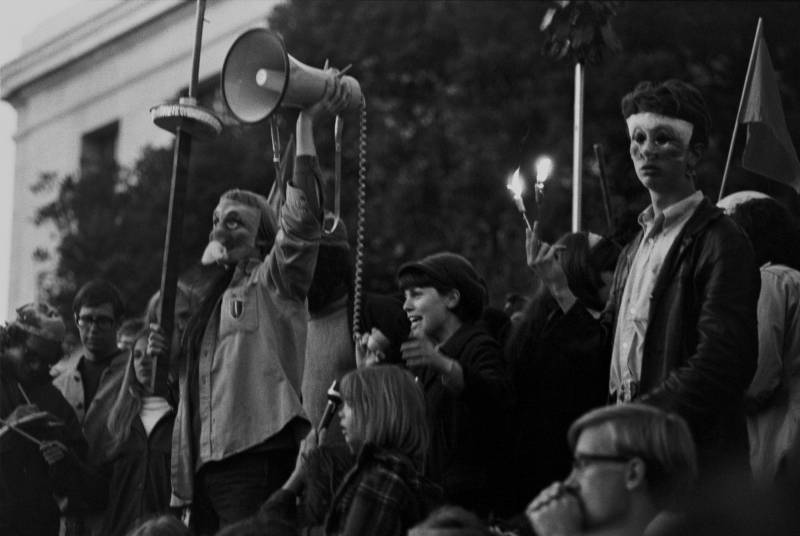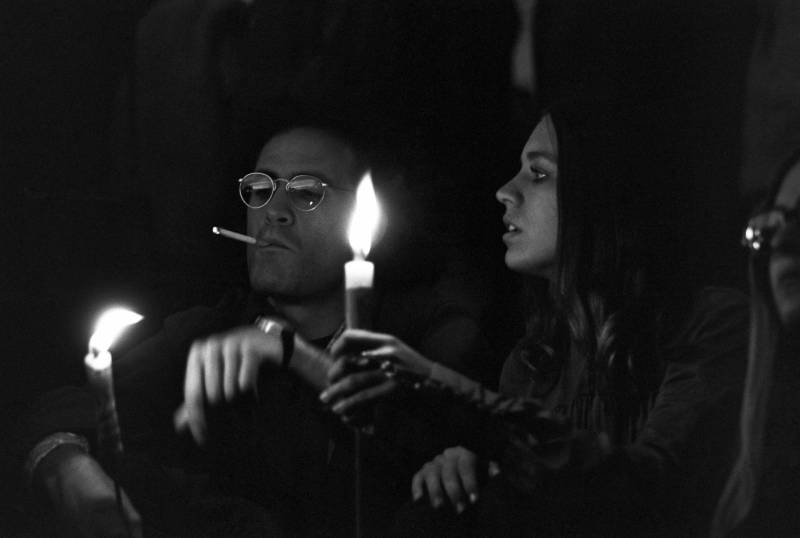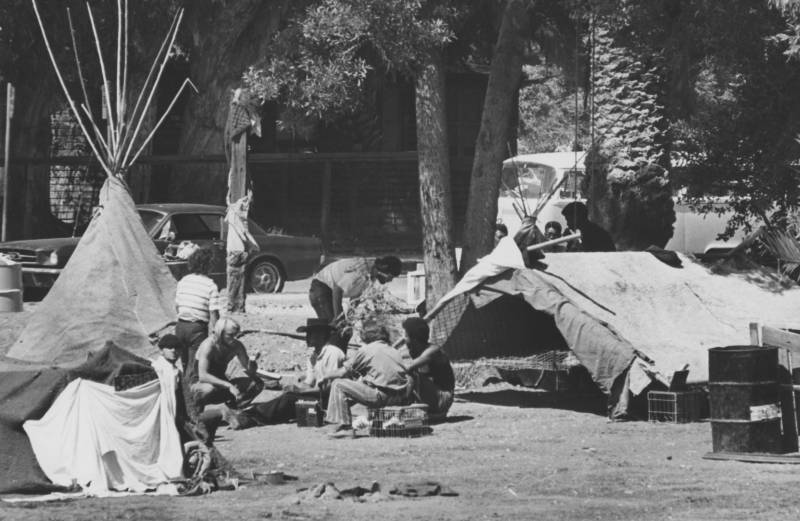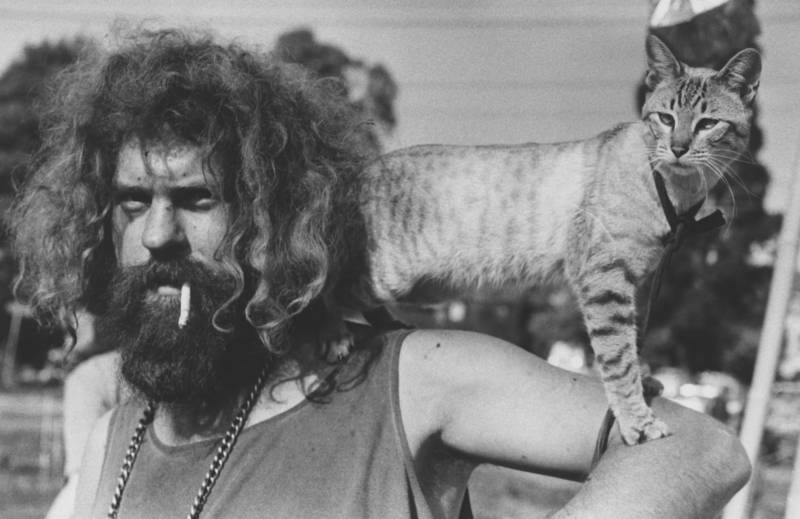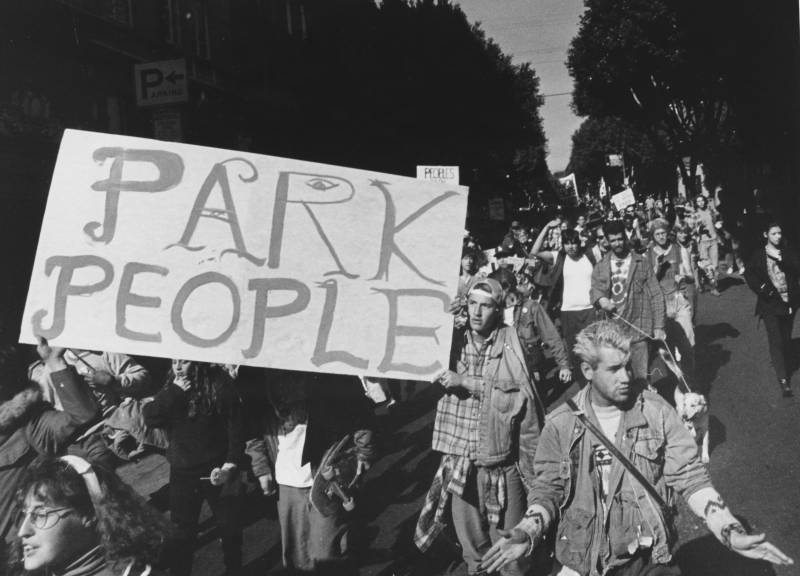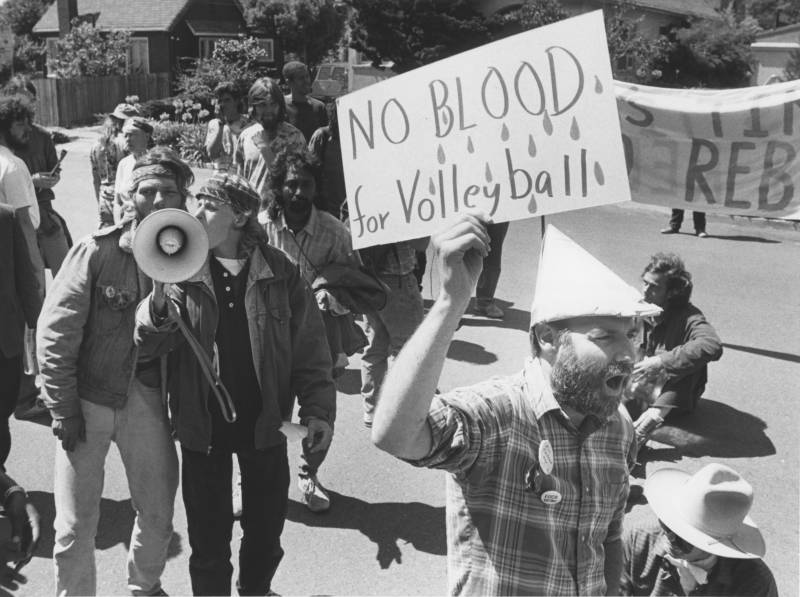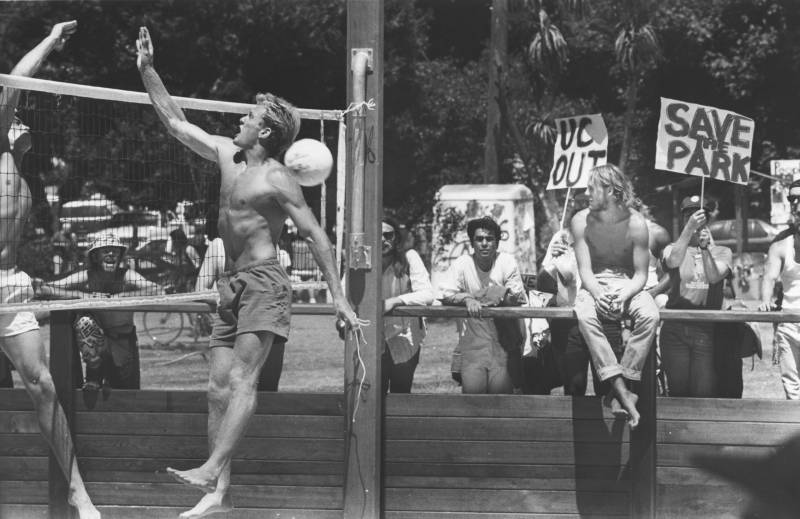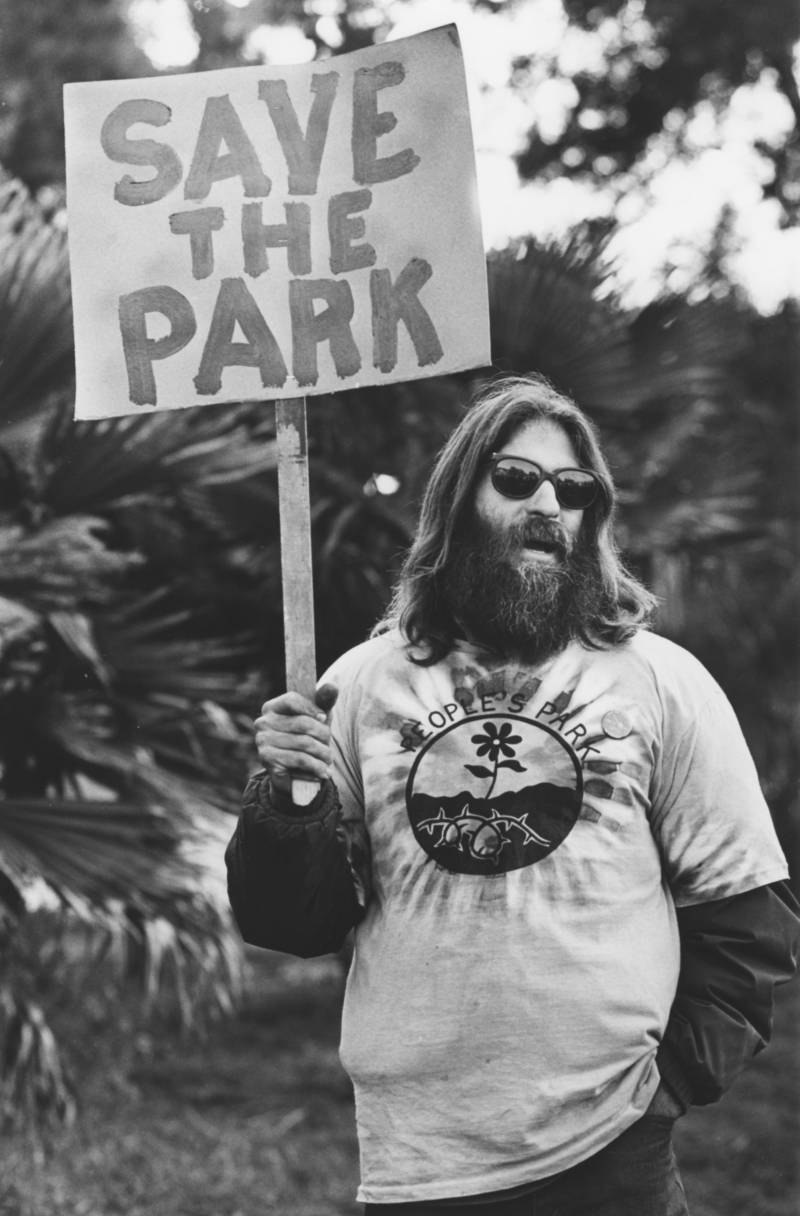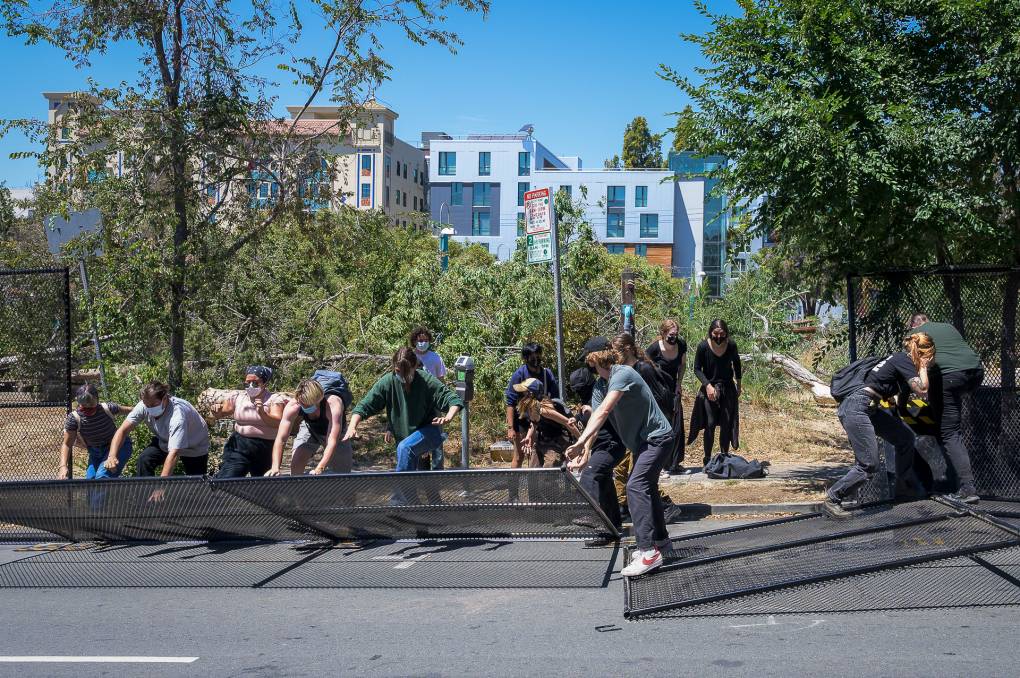For more than half a century, People’s Park in Berkeley has been a beacon of community activism. It’s also a place where authorities and the counterculture have done battle again and again. The space, east of Telegraph, has been a contentious plot of land ever since an April 1969 ad in the Berkeley Barb encouraged people to congregate there.
UC Berkeley originally bought the 2.8 acre plot in 1967 to construct dorms, but after bulldozing several buildings, the university left the lot vacant. After that ad in the Barb encouraged the public to take over the space, not only did crowds start gathering there, they quickly dug a pond, began gardening projects and put up a small playground. And thus, People’s Park was born.
The Haste Street plot quickly became a site for local protests, community gatherings and rallies like this anti-war demonstration.
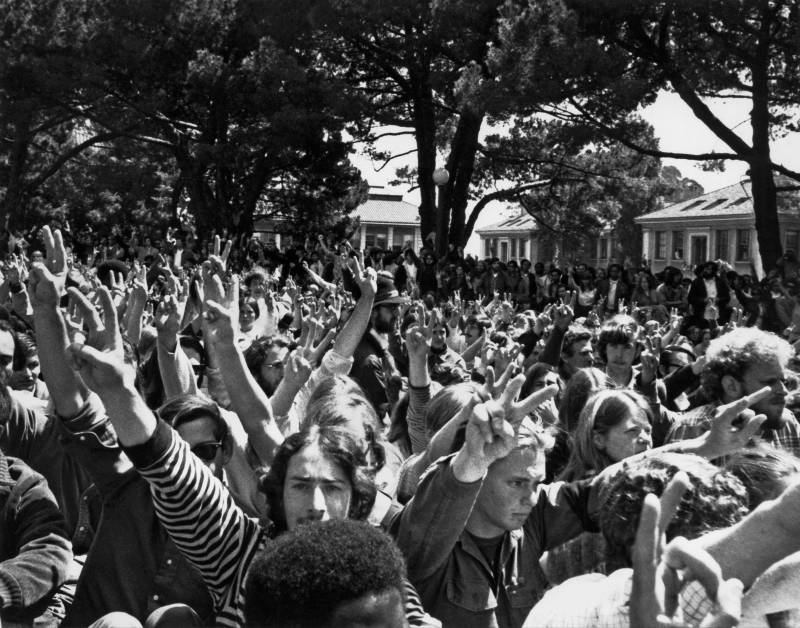
A month later, on May 15, work crews arrived, destroyed much of what the community had built and put up an 8-foot chain link fence to keep the public out. Protesters were not shy about sharing their feelings about the development.
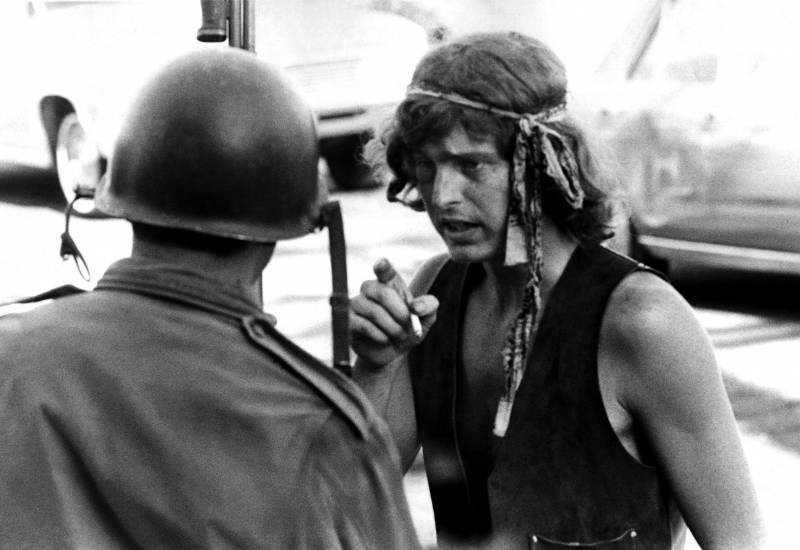
Soon, protesters were clashing with Berkeley PD over the park. One man was killed by sheriff’s deputies. Another was blinded. Then-Governor Ronald Reagan sent in 2,000 National Guard troops. As feelings ran high, violent confrontations filled the streets. So did tear gas.
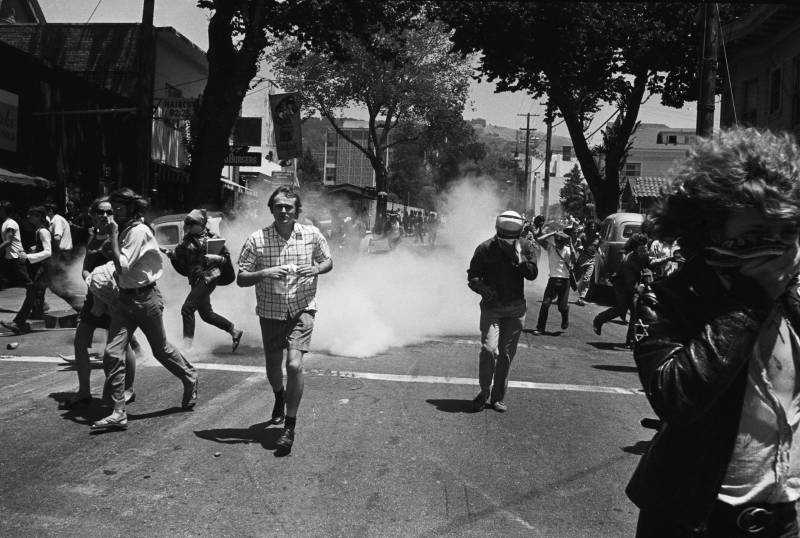
Meanwhile, a 25-minute walk away in what is now Ohlone Park on Hearst Avenue, work was under way to establish a “People’s Park Mobile Annex.” As had been done at the original site, people planted trees, brought in playground equipment and generally tried to beautify what was then a vacant lot.
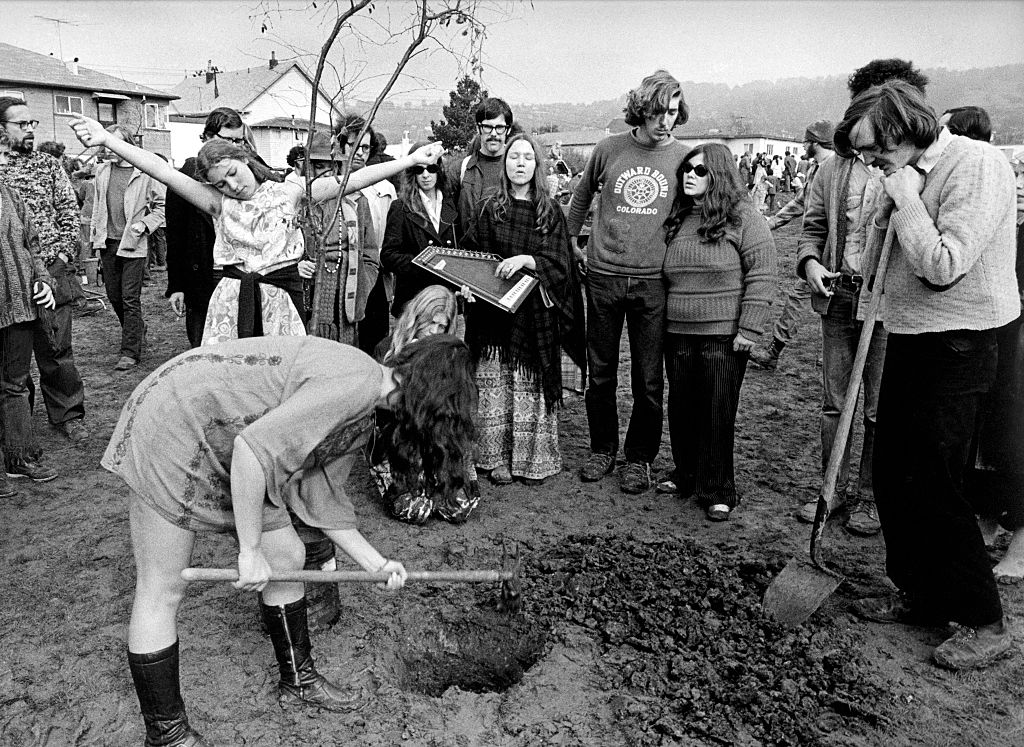
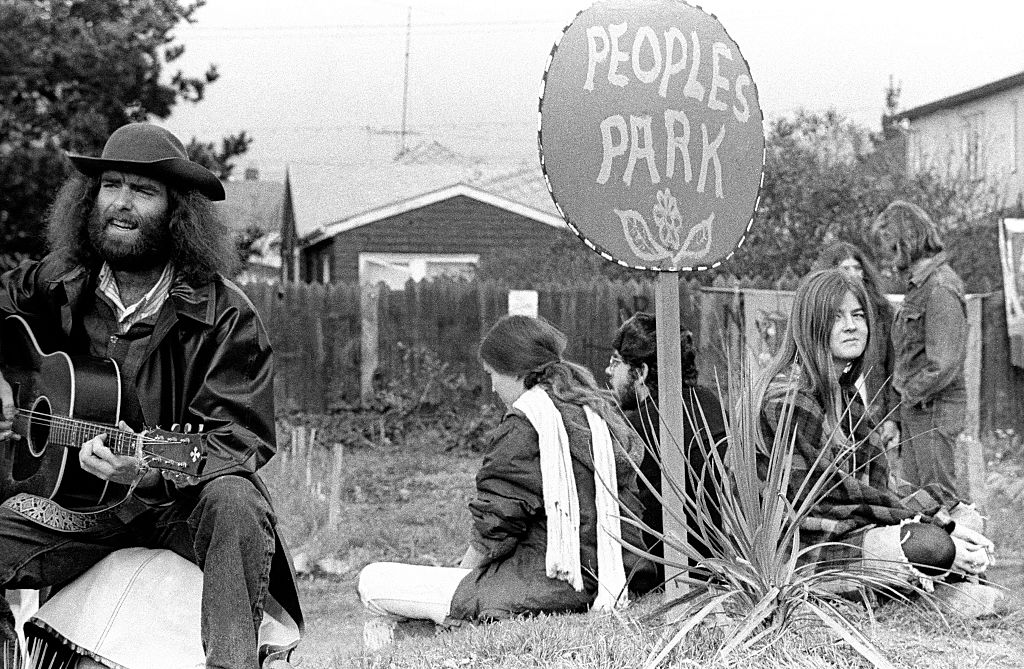
Despite several attempts by authorities to remove the plants and equipment at the Annex, people continued to gather there.
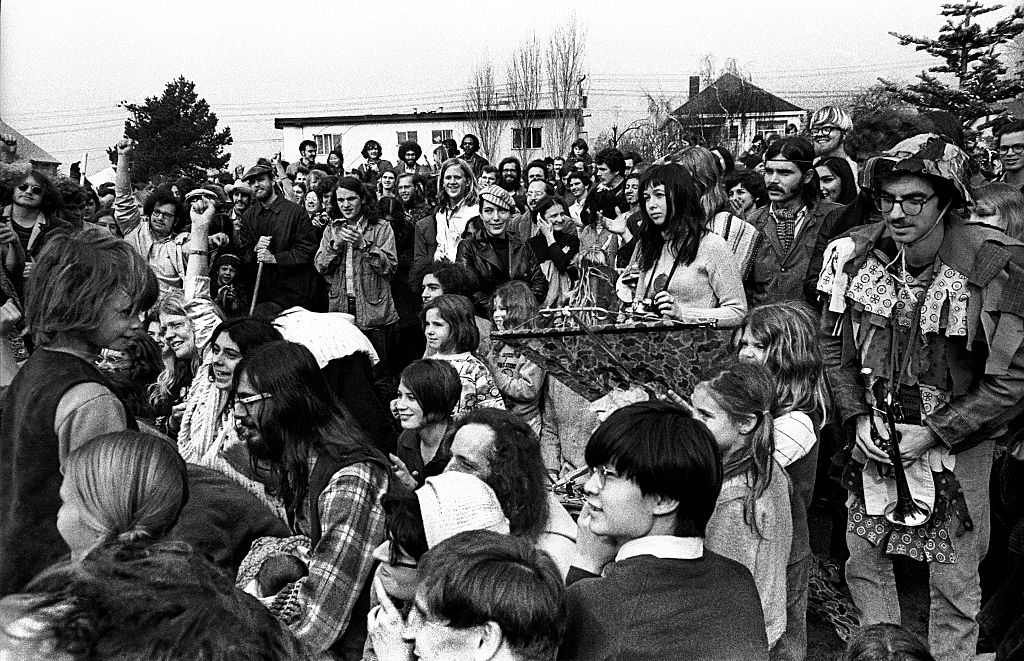
Apartments had originally been the intended use for the Hearst Avenue plot. However, in June 1979 — five years after a citizen’s committee concluded that locals overwhelmingly wanted it to be a public park — the land officially became Ohlone Park. A victory for the people, as well as their dogs — Ohlone bears the distinction of being one of the first off-leash dog parks in America.
